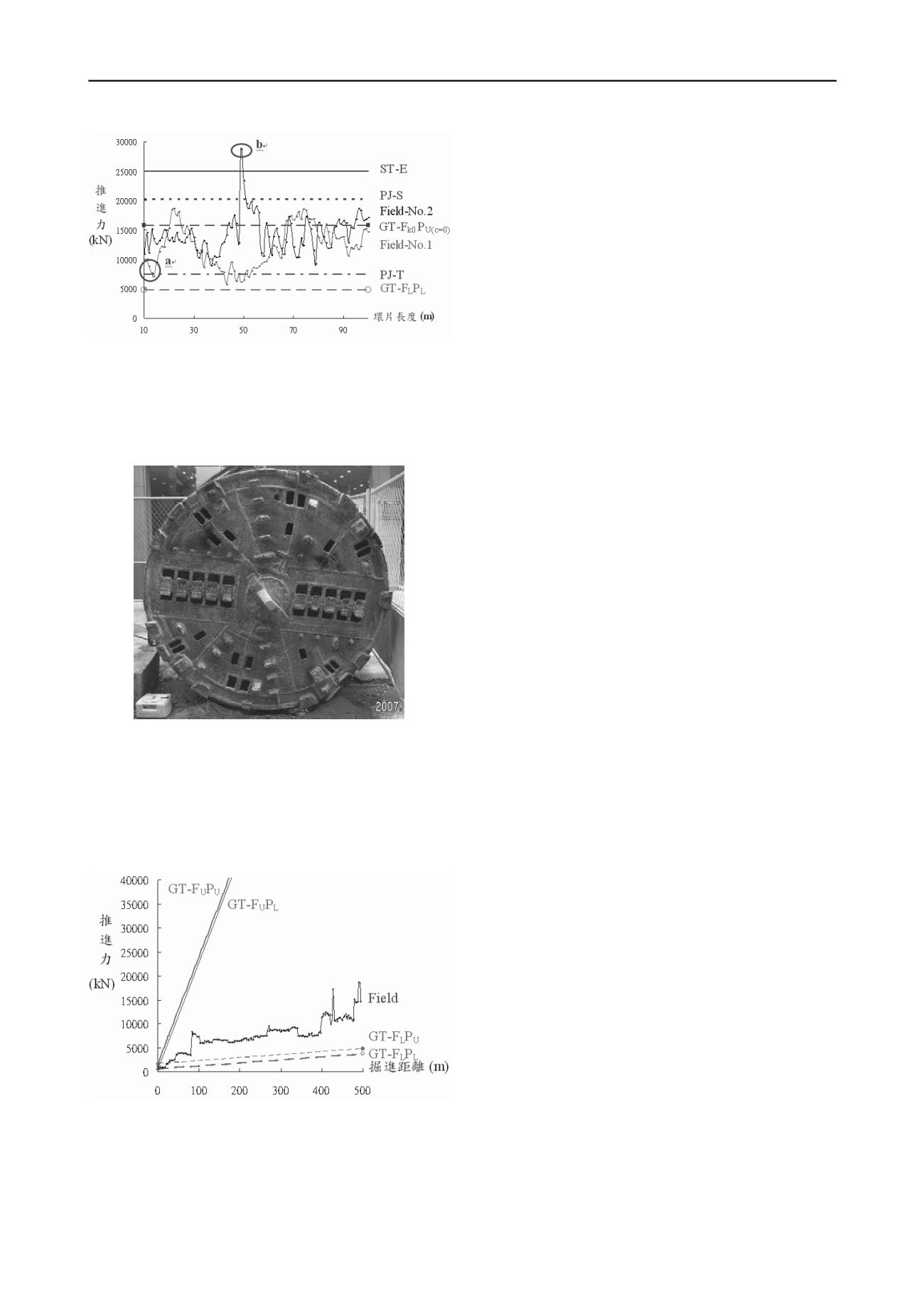
513
Technical Committee 102 /
Comité technique 102
4 CONCLUSIONS
The results shows that the total thrust for upper bounds and
lower bounds are: (401%, 37.8%) and (258.2%, 31.7%)
compared with normal condition in gravel and weathered
sandstone cases respectively, which normalized boundary
values are (13×10-4 ~ 82×10-4) and (0.97 ~ 4.98) for cutting-
head resistance respectively. It also found that the cutting-head
resistance take about 28% of the total trust resistance
(F=4773kN) in the gravel case by taking cutters’ forces into
account.
5 REFERENCES
Figure 5. Theoretical upper and lower bounds associated with data
curve in field for shield tunnel project (vertical axis: trust in kN and
horizontal axis: rate of penetration in m)
3.2
Case II: Pipe jacking project in Taiwan
Another case study is presented for pipe jecking tunnel
shown in Fig. 6.
Balci, C., "Correlation of rock cutting tests with eld performance of a
TBM in a highly fractured rock formation: A case study in
Kozyatagi-Kadikoy metro tunnel, Turkey", Tunnelling and
Underground Space Technology, Vol.24, 2009, pp. 423 - 435.
Chen, L. H., Failure of Rock under Normal Wedge Indentation, Ph. D.
Thesis, University of Minnesota, U.S.A., 2001.
Huang, H., Detournay, E., and Alehossein, H., "Analytical Model for
the Indentation of Rocks by Blunt Tools," Rock Mechanics and
Rock Engineering, Vol.33, No.4, 2000, pp. 267 - 284.
Farrokh, E. and Rostami, J., "Correlation of Tunnel Convergence with
TBM Operational Parameters and Chip Size in the Ghomroud
Tunnel, Iran," Tunnelling and Underground Space Technology,
Vol.23, 2008, pp.700 - 710.
Figure 6. Cutting head in field for pipe jacking project
Unlike a flat data curve in field for the case of shield tunnel,
the in-situ data curve for pipe jacking method in Fig. 7 increases
in trust (vertical axis) with the increase of rate of penetration
(horizontal axis) due to the lateral resistance is proportional to
the pipe length. In this cutting case of sewer system, there is no
abnormal excavation situation such that the data curve does not
reach the theoretical boundaries.
Figure 7. Theoretical upper and lower bounds with in-situ data curve for
pipe jacking project of sewer system (vertical axis: trust in kN and
horizontal axis: rate of penetration in m)


